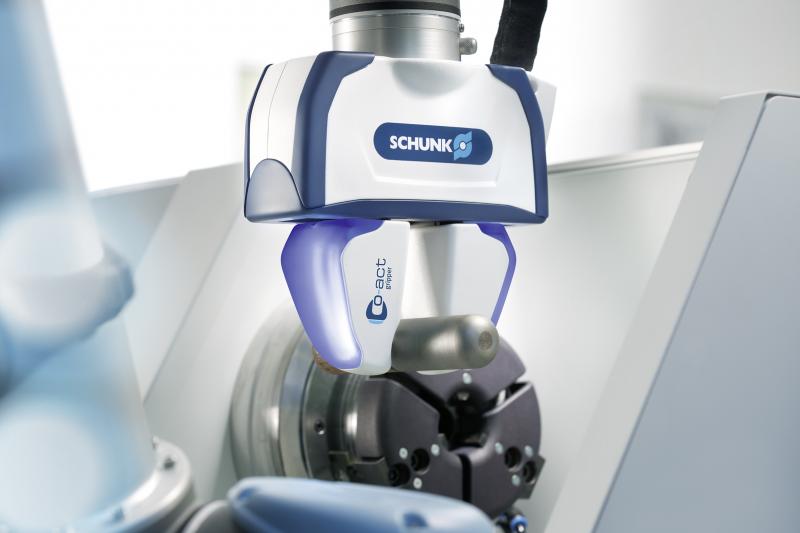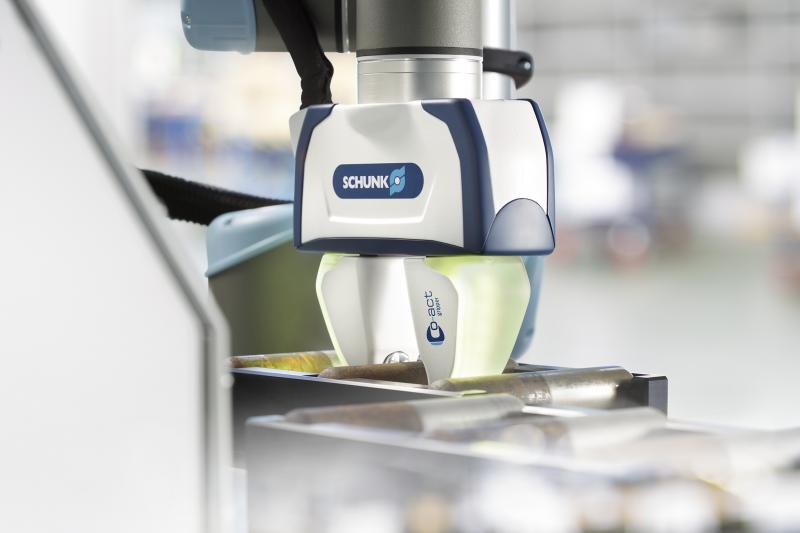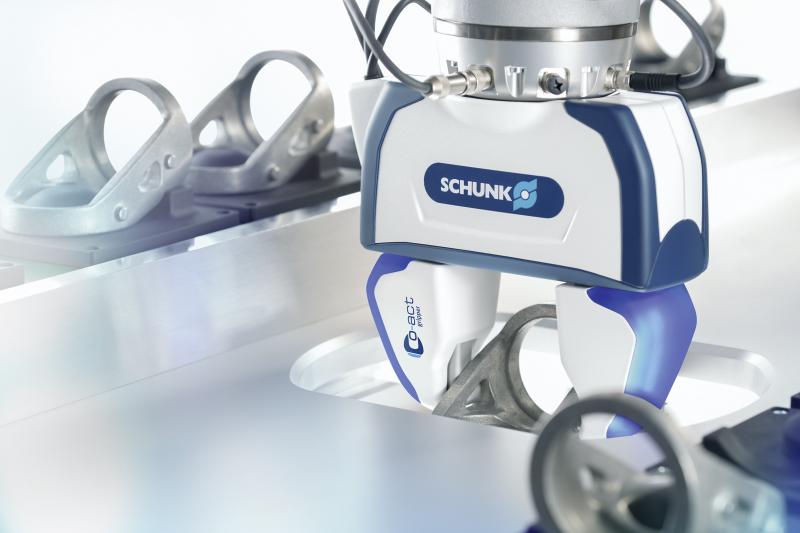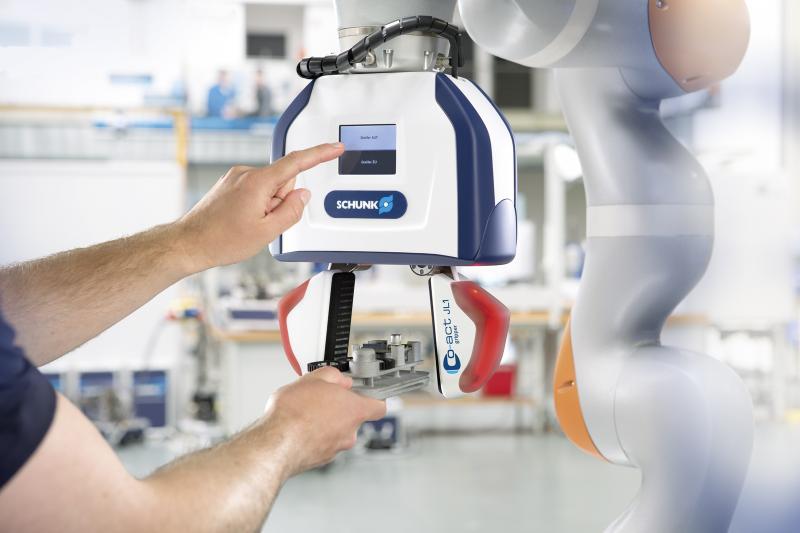Typically robots used in manufacturing are kept in cages, to protect people working near them from getting hurt. According to many handling experts, this is now changing and that the direct collaboration of humans with robots will soon be an integral part of production automation in a few years. SCHUNK, the competence leader for gripping systems and clamping technology are working on “taming” grippers for collaborative scenarios, and for the production field. According to many experts, repetitive activities such as loading and unloading of machine tools will be gradually taken over by collaborative systems. Employees are usually responsible for the management of several machines, such as raw and finished parts, and now collaborative robots are taking over the loading works. In contrast to conventional automated solutions with robots and protective fences, machine tools will be freely accessible during such collaborative applications: Individual orders and small series will be individually handled by the employee. Another field of application of collaborative systems is the handling of workpieces in health threatening areas, such as x-ray inspection of aluminum cast parts. The direct handling in radiation ranges of the x-ray machine can now be taken over by the Co-act gripper, before the component is handed over to the employee for individual post-processing and finishing.
Grippers with DGUV seal
According to SCHUNK, it will become more common in the future, to separate parts of a process and to divide the tasks between humans and robots. This applies in particular in areas where full automation will be difficult to implement or whether it is economically feasible. This particularly concerns applications, where the quantities are too low for a fully automated solution, and which are too comprehensive for manual tasks or vice versa. HRC solutions bring decisive advantages for such scenarios: They increase productivity, ensure a high degree of flexibility, and reduce the employee’s workload. Moreover, they reduce the risk of injuries and ensure constant quality of reproducible processes independent from the operator’s daily condition. Following the underlying standards and guidelines, SCHUNK has defined three central principles for HRC grippers: First, a gripper will never cause injuries during gripping. Second, a gripper must always recognize contact with humans. And thirdly, a gripper must never lose the workpiece. Depending on the application, the innovative family-owned company uses different technologies and components for this purpose: the basic version of a so-called inherent HRC gripper includes a limitation of the gripping force, which is activated in situations of danger, and limits the gripping force to 140 N. In addition, a HRC compatible design with rounded corners and edges reduces the risk of injuries.
Moreover, in the future, it will be possible to equip the SCHUNK Co-act grippers with additional features: Secure drives ensure that heavy parts are reliably held in the event of an emergency stop. An environment sensor permanently controls the environment of the gripper. Intelligent software evaluates the sensor signals and processes them. The safety directive for industrial robots DIN EN ISO 10218 is the basis for the SCHUNK Co-act series, and the aspects of the future DIN EN ISO 20218 are already been taken into consideration. Beside the SCHUNK SVH 5-finger hand, which is already certified and approved for collaborative operation by the German Social Accident Insurance (DGUV), certification of further SCHUNK co-act grippers will probably be finished at the end of 2017.
Sensory aura
The Co-act Gripper JL1, the world’s first collaborative gripper, which directly interacts and communicates with humans, shows what is possible for the future. The HRC gripper was honored in April with the coveted Hermes Award for its high degree of innovation. Provided by a sensory aura and an artificial intelligence, which is completely integrated in the gripper, the Co-act Gripper JL1 is able to permanently collect information on the gripped component and its environment, to process them and to carry out situation-dependent reactions. An innovative kinematics, which allows a parallel and angular grip, ensures that part variants can be flexibly and alternately handled. Tactile sensors, which are integrated in the fingers, monitor the reliable grip, and ensure that sensitive components are not damaged. By means of specifically developed gripping strategies, the sensitive gripper adapts its behavior in real time, regardless of whether a component or a human hand is gripped. A touch screen and an integrated LED panel allows communication and intuitive interaction with humans. With OPC UA interfaces, the gripper is able to communicate with the robot and the higher level control unit.
SCHUNK at the EMO 2017: hall 3, booth E55







 Germany
Germany 